Classification:
The process of putting similar things into groups.
Taxonomy: Is the science of classifying
organisms.
History of Classification
- 384-322 B.C.
- Aristotle (Greek Philosopher)
- Created first written
classification scheme
- TWO Groups - Plants & Animals
- Animal group - anything that
lived on land, in the water or in the air.
- Plant group - based this on
their different stems
- 1500's - 1700's
- Many different classification
systems created
- Many of them really
complicated
- Names based on common names -
This created confusion
- Names also
based on long scientific definitions
1700's - Carols Linnaeus –
Swedish Biologist
- established
a simple system for classifying and naming organisms
- Based on
structural similarities of organism
- Binomial
Nomenclature - 2 name naming system - still in use today.
- Created a
system of groups called TAXA or
TAXON
- Each Taxon
is a category into which related organisms are placed.(a category is
called taxon(plural taxa))
Levels
of Classification:
|
Kingdom
|
|
Phylum
|
|
Class
|
|
Order
|
|
Family
|
|
Genus
|
|
Species
|
|
|
|
|
|
|
|
|
|
|
|
|
|
|
The kingdom
is the largest category and is followed by these subgroups respectfully -
phylum, class, order, family, genus, and species.
( as we go
upper from species to kingdom number of similar character decreases)
Binomial Nomenclature:
1.
The
scientific name must be in Greek or Latin language.
This helps to accurate communicate information to other biologist around the world who use many different languages. This is done by assigning a unique two-word scientific name to each organism. (BINOMIAL NOMENCLATURE)
This helps to accurate communicate information to other biologist around the world who use many different languages. This is done by assigning a unique two-word scientific name to each organism. (BINOMIAL NOMENCLATURE)
2. The first part of the name is called
the Genus and the second part of the name is
called the species.
3. The Genus name refers to the
relatively small group of organisms to which a particular type of organism
belongs.
4. The SECOND part of the name is the SPECIES.(specific name)
5. (SPECIES means IDENTIFIER) The Species name is usually a
Latin description of some important characteristic of the organism.
IDENTIFYING
ORGANISMS BY THEIR GENUS AND SPECIES NAMES IS CALLED THE BINOMIAL SYSTEM, OR BINOMIAL
NOMENCLATURE. ("TWO-NAME NAMING)
1) Monera Kingdom
Characteristics of the Monera Kingdom
- Prokaryotes
- Heterotrophic and autotrophic
(Heterotrophic - Organism that can't synthesize (make) it's own food)
(Autotrophic - Organism that CAN make it's own food - photosynthesis) - Anaerobic and aerobic
- aquatic, terrestrial and in the air
- mostly asexual
- mostly non motile (1 form does move)
- lack nuclei
- digestion:extra cellular
- Circulation and digestion in Kingdom Monera is
accomplished through diffusion
11 METHOD OFNUTRITION: absorb food and/or photosynthesize
12 The cell wall is composed of polypeptide cross links and polysaccharides with a chemical known as peptidoglycan(the exceptions are the archaebacteria)
Recently, biologists have identified
two distinct groups within Monera :eubacteria
(True bacteria) and archebacteria (ancient bacteria).
Ex: bacteria, blue-green algae(cyanobacteria), and spirochetes.
A.Archebacteria:
Archaebacteria
- includes methanogens, halophiles and thermoacidophiles
Archaebacteria
are autotrophs and use CO2 in atmosphere as a source of carbon for a process
called carbon fixation. Archaebacteria are able to survive in extreme
conditions and therefore also known as extremophiles
1 Methanogens (which
produce methane from carbon dioxide and hydrogen gas.)
Metanogens are able to reduce CO2 into methane (CH4). They are obligately anaerobic and can be killed with exposure to oxygen. They produce marsh gas that one can observe as bubbles in stagnant waters. They are also present in the gut of cattle and termites. Methanogens use carbon dioxide as an electron acceptor to oxidize hydrogen using coenzymes like coenzyme M and methanofuran. These coenzymes are very unique to archaebacteria. These bacteria are rod shaped or spherical and can be gram positive as well as negative.
2 Halophiles
Halophiles are bacteria that can survive in 10 times the concentration of salt present in sea. You can find halophilic archaebacteria in Great Salt Lake in
3 Thermoacidophiles are organisms that can survive in extremely high temperatures and low pH. They can survive in 100° Celsius with a pH of 2. Most of these organisms are anaerobic in nature.
Reproduction in archae is carried out asexually by binary or multiple fission, fragmentation or budding. They do not undergo meiosis and therefore organisms of a species that are present in more than one form share the same genetic matter.
Ø
Kingdom Archarabacteria Characteristics:
1. Cell wall lacks peptidoglycan.
2. DNA much closer to Eukarya than Bacteria.
3. Autotroph.
4. Some DNA has histones.
5. Growth not inhibited by antibiotics.
6. Several kinds of RNA.
7. Some have unusual lipids, and branched hydrocarbon.( They have a very different lipid bilayer making up the cell membranes)
8. Can live in extreme temperatures. Some are even able to survive in temperatures above 100° Celsius or 212° Fahrenheit.
1. Cell wall lacks peptidoglycan.
2. DNA much closer to Eukarya than Bacteria.
3. Autotroph.
4. Some DNA has histones.
5. Growth not inhibited by antibiotics.
6. Several kinds of RNA.
7. Some have unusual lipids, and branched hydrocarbon.( They have a very different lipid bilayer making up the cell membranes)
8. Can live in extreme temperatures. Some are even able to survive in temperatures above 100° Celsius or 212° Fahrenheit.
9 The cell wall is made up of glycoproteins and polysaccarides.
Ø
Importance of the Archaebacteria
Kingdom
The importance of archaebacteria kingdom are as follows:
They have phylogenic importance that helps in studying their homology and establish their phylogeny.
Their ability to tolerate extreme conditions helps one learn about the climatic conditions, environment and their survival on ancient earth.
Methanogens can grow in bio-gas fermentors and decompose cow dung into methane gas as a by-product. Thus, they are used for production of domestic gas for cooking.
Organisms like Methanobacterium ruminatum are present in the gut of ruminating animals, helping them digest the cellulose.
Poor ores of molybdenum are microbial leached using Sulfolobus.
Archaebacteria are also used to synthesize thermophilic enzymes, restriction enzymes and are also used as bio-sensors
Archaebacteria Examples
The following names of organisms are a few archaebacteria examples:
Methanobacterium
Methanococcus
Methanospirillum
Halococcus
Halobacterium
Thermoplasma
Thermoproteus
Sulfobolus
Pyrolobus fumarii
Methanococcus jannischii
The importance of archaebacteria kingdom are as follows:
They have phylogenic importance that helps in studying their homology and establish their phylogeny.
Their ability to tolerate extreme conditions helps one learn about the climatic conditions, environment and their survival on ancient earth.
Methanogens can grow in bio-gas fermentors and decompose cow dung into methane gas as a by-product. Thus, they are used for production of domestic gas for cooking.
Organisms like Methanobacterium ruminatum are present in the gut of ruminating animals, helping them digest the cellulose.
Poor ores of molybdenum are microbial leached using Sulfolobus.
Archaebacteria are also used to synthesize thermophilic enzymes, restriction enzymes and are also used as bio-sensors
Archaebacteria Examples
The following names of organisms are a few archaebacteria examples:
Methanobacterium
Methanococcus
Methanospirillum
Halococcus
Halobacterium
Thermoplasma
Thermoproteus
Sulfobolus
Pyrolobus fumarii
Methanococcus jannischii
B.Eubacteria
Eubacteria: - includes most of the common
bacteria, bacillus, streptomyces, escherichia, etc.
Taxonomists separate the Eubacteria on several criteria. An
important factor is the outcome of the Gram stain. Differences in cell wall
composition cause bacterial cells to stain differently. The purple cells are
Gram positive, and the pink ones are Gram negative. Similar cell wall
composition suggests common ancestry.
Some bacterial groups share the capacity to produce gelatinous
capsules around the cell wall. This is particularly prevalent among
disease-causing bacteria and may protect them from the immune system of their
hosts. Bacteria may be autotrophs, which produce their own food, or heterotrophs,
which feed on organic compounds produced by other organisms.
A bacterium may occur as a round coccus, rod-shaped bacillus, or
corkscrew spirillum; there are also a few odd shapes. The presence or absence
of flagella, and their shape and location, may also be important..
Kingdom Bacteria Characteristics:
1. Cell wall contains peptidoglycan.
2. DNA differs greatly from the DNA of members of the Eukarya Domain.
3. Heterotroph.
4. DNA lack histones.
5. Growth inhibited if it encounters antibiotics such as Streptomycin.
6. One kind of RNA.
7. Unbranched hydrocarbon.
8. Cannot live in environments with temperatures above 100 degrees Celcius.
1. Cell wall contains peptidoglycan.
2. DNA differs greatly from the DNA of members of the Eukarya Domain.
3. Heterotroph.
4. DNA lack histones.
5. Growth inhibited if it encounters antibiotics such as Streptomycin.
6. One kind of RNA.
7. Unbranched hydrocarbon.
8. Cannot live in environments with temperatures above 100 degrees Celcius.
Benefits:
Bacteria (monerans) kill
disease-causing organisms, break down overabundant algae, and recycle chemical
pollutants such as ammonia and hydrogen sulfide. Intestinal bacteria are
essential for proper digestion. Bacteria in plant roots convert atmospheric
nitrogen gas into fixed-nitrogen, used by plants to build proteins. Life-saving
medicines, such as the antibiotic streptomycin, are made from bacteria.
2) Protista Kingdom
Characteristics
of the Protista Kingdom
1.
Protists are grouped according to whether
they are animal-like, plant-like, or fungus-like.
2.
Animal-like protists are called protozoans
4.
Fungus-like protists are divided into
three groups: mxyomycota ("plasmodial slime molds"), acrasiomycota ("cellular slime molds"),
and oomycetes ("mildews and water molds").
5.
Eukaryotes
6.
Heterotrophic and Autotrophic
7.
Unicellular
8.
Mostly aquatic
9.
Mostly asexual
10.
Motile and nonmotile
11.
protists are more
complex, having a nucleus
12. METHOD OFNUTRITION: absorb, ingest, and/or
photosynthesize food
ex: Protozoa, slime
molds and algae of various types
Kingdom
Protista (Protoctista)
1.1Protozoa = heterotrophic
protists:
Paramecium :
move using cilia
has two nuclei: macronucleus, micronucleus
food is gathered through the :mouth pore, moved into a gullet, forms a food vacuole
anal pore is used for removing waste
contractile vacuole removes excess water
exhibits avoidance behavior
reproduces asexually (binary fission) or sexually (conjugation)
outer membrane -pellicle- is rigid and paramecia are always the same shape, like a shoe
has two nuclei: macronucleus, micronucleus
food is gathered through the :mouth pore, moved into a gullet, forms a food vacuole
anal pore is used for removing waste
contractile vacuole removes excess water
exhibits avoidance behavior
reproduces asexually (binary fission) or sexually (conjugation)
outer membrane -pellicle- is rigid and paramecia are always the same shape, like a shoe
- (Amoeba, radiolarians) Sarcodines – extensions of cytoplasm (pseudopodia)
Amoeba :
moves using pseudopodia ( “false feet” ), which are like
extensions of the cytoplasm –ameboid movement
ingests food by surrounding and engulfing food (endocytosis), creating a food vacuole
reproducing by binary fission (mitosis)
contractile vacuole – removes excess water
can cause amebic dysentery in humans – diarrhea and stomach upset from drinking contaminated water
Other sarcodines: Foraminferans, Heliozoans
ingests food by surrounding and engulfing food (endocytosis), creating a food vacuole
reproducing by binary fission (mitosis)
contractile vacuole – removes excess water
can cause amebic dysentery in humans – diarrhea and stomach upset from drinking contaminated water
Other sarcodines: Foraminferans, Heliozoans
-
(Plasmodium - malaria) Sporozoans – do not move on their own
parasitic
Malaria is caused by a sporozoan (Plasmodium), which infects the liver and blood; transmitted by mosquitos
parasitic
Malaria is caused by a sporozoan (Plasmodium), which infects the liver and blood; transmitted by mosquitos
3 .Fungi
Kingdom:
Characteristics
of the Fungi Kingdom
1. All are eukaryotic
Possess
membrane-bound nuclei (containing chromosomes) and a range of membrane-bound
cytoplasmic organelles (e.g. mitochondria, vacuoles, endoplasmic reticulum).
2. Most are filamentous
Composed
of individual microscopic filaments called hyphae, which exhibit apical growth and which
branch to form a network of hyphae called a mycelium. (Most fungi grow as tubular filaments called hyphae. A connected mass of hyphae is a mycelium.)
3. Some are unicellular
e.g. yeasts.
4 Protoplasm
of a hypha or cell is surrounded by a rigid wall
Composed
primarily of chitin and glucans, although the walls of some species contain
cellulose.
6 All are achlorophyllous
They
lack chlorophyll pigments and are incapable of photosynthesis.
7. Possess characteristic range
of storage compounds
e.g. trehalose, glycogen, sugar alcohols and
lipids.
9. May be free-living or may
form intimate relationships with other organisms
i.e.
may be free-living, parasitic or mutualistic (symbiotic).lichen=algae+fungi(phycobiont
+mycobiont).the fungi absorbs water and mineral water and supplies it to the
algae .The algae in turn prepare food and supplies it to the fungus.
10.Fungi have a vegetative body called a thallus, composed of hyphae.
11 Fungi digest
food outside their bodies: they release enzymes into the surrounding environment
(exoenzymes), breaking down organic matter into a form the fungus can absorb.
12 Food reserves stores
as glycogen (like animals), not starch (like plants).
13 METHOD OFNUTRITION: absorb food
ex: Mushrooms, bread molds,
water molds, yeasts, rusts, puffballs
1.1
Classification of Fungi
Division Zygomycota.
Members
of the division Zygomycota are known aszygomycetes. Zygomycetes produce sexual spores
known as zygospores (Figure1 ),
as well as asexual sporangiospores.
Division Ascomycota. Members of the division Ascomycota are referred to asascomycetes. After sexual fusion of cells has taken
place, these organisms form their sexual spores within a sac called an ascus. Therefore, they are called sac
fungi.
Ascomycetes
include the powdery mildews and the fungi that cause Dutch elm disease and
chestnut blight disease. The research organism Neurospora
crassa is found
within this group. Asexual reproduction in the ascomycetes involves conidia.
Many
yeasts are classified in the division Ascomycota. Of particular interest is thefermentation yeast Saccharomyces.
This yeast is used in the production of alcoholic drinks, in bread making, and
as a source of growth factors in yeast tablets. It is an extremely important
research organism as well.
Division
Basidiomycota. Members
of the division Basidiomycota are referred to as basidiomycetes and are called club
fungi. After the
sexual cells have united, they undergo division and produce a clubshaped
structure called a basidium.Sexually
produced basidiospores form at the tips of the basidia.
Basidia are often found on huge, visible, fruiting bodies called basidiocarps. The typical mushroomis
a basidiocarp.
Basidiomycetes
are used as food (for example, mushrooms), but some basidiomycetes are
pathogens. One of the organisms of meningitis is the basidiomycete Cryptococcus
neoformans. The mushroom Amanita is poisonous to humans.
Division
Deuteromycota. Members of the Deuteromycota division are calleddeuteromycetes. These fungi lack a known sexual cycle
of reproduction and are said to be “imperfect.” When its sexual cycle is
discovered, a fungus from this division is usually reclassified in one of the
other divisions. Among the imperfect fungi are the organisms of athlete's foot
and ringworm.
Fungi is classified into different classes.
Class: Phycomycetes eg: Mucor, Rhizopus
Class: Ascomycetes eg: Penicillium, Yeast
Class: Basidiomycetes eg: Ustilago. Puccinia, Agaricus(mushroom)
Class: Deuteromycetes eg: Alternaria, Colletotrichum
Class: Phycomycetes eg: Mucor, Rhizopus
Class: Ascomycetes eg: Penicillium, Yeast
Class: Basidiomycetes eg: Ustilago. Puccinia, Agaricus(mushroom)
Class: Deuteromycetes eg: Alternaria, Colletotrichum
Types of Fungi
Basidiomycetes and Ascomycetes
|
Fungi with
sporophores (fruiting bodies) large enough to be readily visible will usually
belong to one of two main groups. The Basidiomycetes or the Ascomycetes. The main difference
between these two groups is in the way in which they produce their
microscopic spores.
In the Basidiomycetes, the spores are produced externally, on the end of specialised
cells calledbasidia.In Ascomycetes, spores are produced internally, inside a sac called an ascus. Asci and basidia are both microscopic structures. |
|
Fungi with spores produced inside a sac called an ascus.
Each ascus
usually contains 8 spores (sometimes 4, depending on the species).
|
Ascomycetes
|
|||
|
Fungi with spores produced
externally, on specialised cells called basidia. Typically, there are 4 spores per basidium, although this varies from 1 to many, depending on the species. |
|
|
|
|
The original plant kingdom proposed by Linnaeus and subsequent taxonomists of that period
included the bacteria, fungi, algae, liverworts, mosses, ferns, conifers and
flowering plants. Plants in general are considered to exhibit the following
distinguishing characters.
- Plants exhibit a great deal of variation in their form and
size. Plant body is usually asymmetrical. However, in higher plants
structures like leaves and flowers have a definite form and shape.
- Plants
are rooted mostly and as such are incapable of locomotion. However,
certain localized movements may occur in a plant body.
- Plants
exhibit unlimited growth, almost throughout their life span.
- Absence
of locomotion.
- Plants
exhibit largely autotrophic nutrition or saprotrophic nutrition.
Particulate matter cannot be absorbed and only materials present in a
solution state can be absorbed.
- Plant
body is composed of cells which have a distinct cell wall, a vacuole
filled with sap and plastids of different kinds. The cells do not have
centrioles and lysosomes.
- Plant
cells can synthesize all the amino acids, coenzymes and vitamins necessary
for its functions.
- Plants
have reserve food as starch.
Plants are classified in the following divisions:
- Division Bryophyta- plants are primitive and lack
vascular tissue and true roots. Examples include mosses and liverworts.
- Super Division Tracheophyta- plants are more advanced and
contain vascular tissue.
- Division Pterophyta- plants reproduce by spores
and grow from underground stems. Example include ferns and horsetails.
- Division Coniferophyta- plants produce naked seeds in
cones and soft wood. Many are evergreens. Examples include redwoods,
pines, cypress, and junipers.
- Division Anthophyta- plants are the most advanced
and produce flowers.Class monocotyldonae plants have seeds that contain
one cotyledon, leaves with parallel veins, flower parts in multiples of
three, no cambium, and scattered vascular bundles in the stem. Class dicotyledonae plants have seeds that contain
two cotyledons, leaves with netted veins, flower parts in multiples of
four and five, cambium, and vascular bundles in a cylinder.
ex: mosses, ferns,
conifers, and flowering plants
1.1.1.1.1
Seed Plants:-
- Gymnosperms have seeds that are not
enclosed.
- "naked seeds"
- cone bearing plants (seeds grow on cones)
- needle like leaves
- usually stay green year round
- wind pollinated
- Examples: pine trees & evergreens
- Angiosperms are the most successful group
of plants
- They have co-evolved with insects to improve
pollination.
- flowering plants
- seeds are enclosed, usually in a fruit
- most are pollinated by birds & bees
- have finite growing seasons
- Examples: grasses, tulips, oaks, dandelions
- Divided into two main groups: Monocots &
Dicots
Monocots
n
Angiosperms have 1 seed leaf (cotyledon)
n
parallel veins on leaves
n
3 part symmetry for flowers
n
fibrous roots
n
Example: lilies, onions, corn, grasses, wheat
n
Vascular tissue scattered
Dicots
n
Angiosperms that have 2 seed leaves (cotyledons)
n
net veins on leaves
n
flowers have 4-5 parts
n
taproots
n
Examples: trees and ornamental flowers
n
Vascular tissue arranged in a ring
9. Which
are the beings that form the kingdom Plantae? Are algae part of this kingdom?
The kingdom Plantae is composed of plants.
Algae are classified into the kingdom Protista and not into the
kingdom Plantae (they are not plants).
Characteristics of Animalia Kingdom
- Eukaryote
- Multicellular
- Heterotrophic
- Terrestrial and Aquatic
- Sexual ( a few asexual)
- Motile ( a few are nonmotile)
- animals can be invertebrates (no backbone) or vertebrates (with backbone).
- METHOD
OFNUTRITION: ingest
food
ex: sponges, jellyfish,
mollusks, round worms, flat worms, segmented worms, arthropods, starfish, fish,
amphibians, reptiles, birds, mammals
1.1.1.1.2
1.1.1.1.3
|


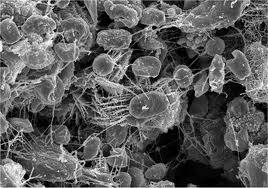.jpg)
.jpg)
.jpg)
.jpg)

.jpg)
.jpg)
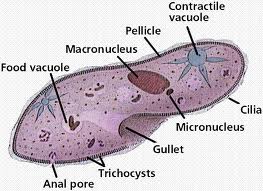.jpg)
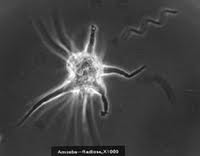.jpg)
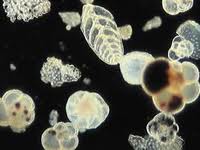.jpg)
.jpg)
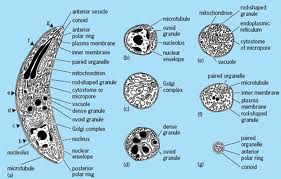.jpg)
.jpg)
.jpg)
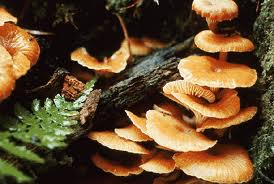.jpg)
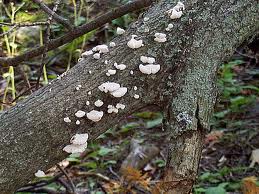.jpg)
.jpg)
.jpg)